Abstract
We have developed a clonal transformation assay for Epstein-Barr virus which uses adult human leukocytes as target cells. The target cells were isolated from Epstein-Barr seronegative donors, and the same donor's cells could be studied repeatedly over long periods of time. When these cells were transformed by Epstein-Barr virus and had proliferated sufficiently to be studied, they had an average cloning efficiency of 3%. Assuming this average cloning efficiency obtains at the onset of transformation, we calculate that transformation by Epstein-Barr virus leads to immortalization maximally of about 1 in 30 of the adult peripheral leukocytes exposed to the virus. Studying the number of colonies transformed as a function of the amount of virus to which the cells are exposed indicates that a single DNA-containing virus particle is sufficient to transform a cell. All of the transformed clones studied harbored viral DNA. This technique will now permit, for the first time, our studying clonal variations in adult peripheral leukocytes transformed by Epstein-Barr virus as a function of input multiplicity of the virus and of the donor's immune status.
Full text
PDF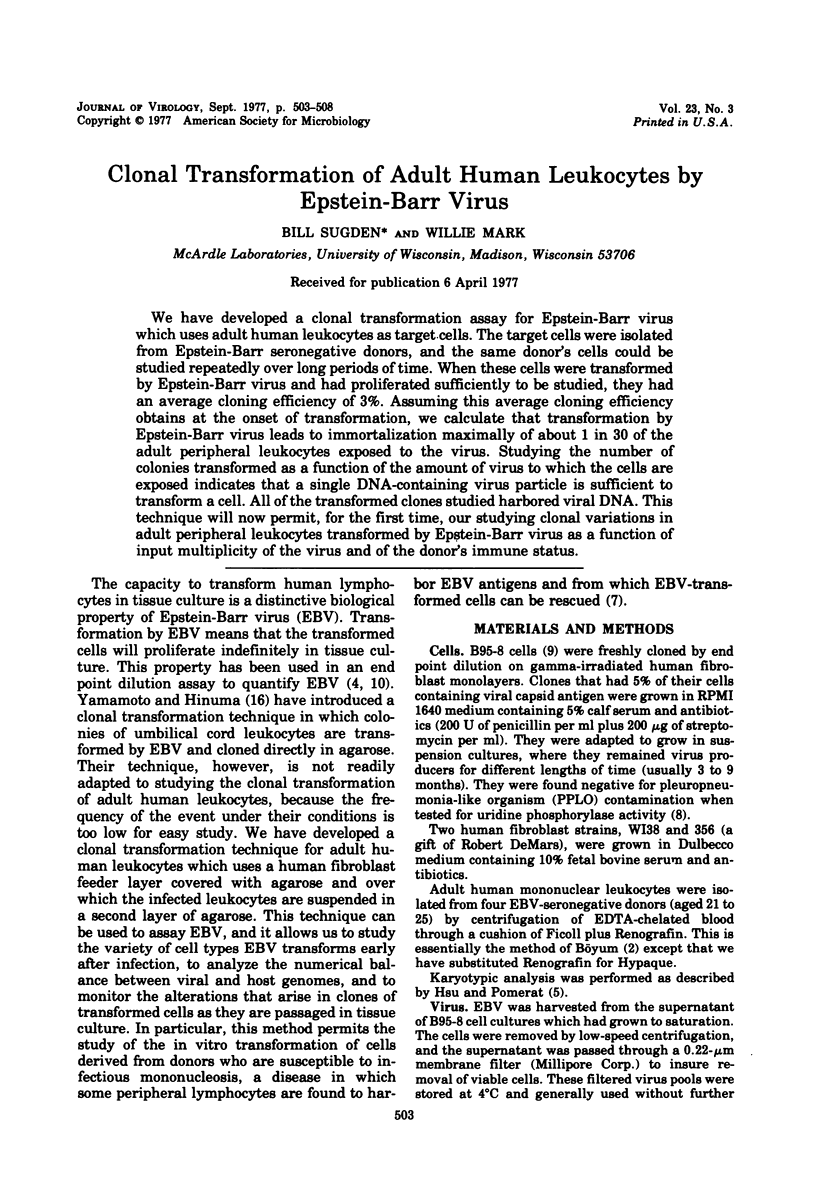
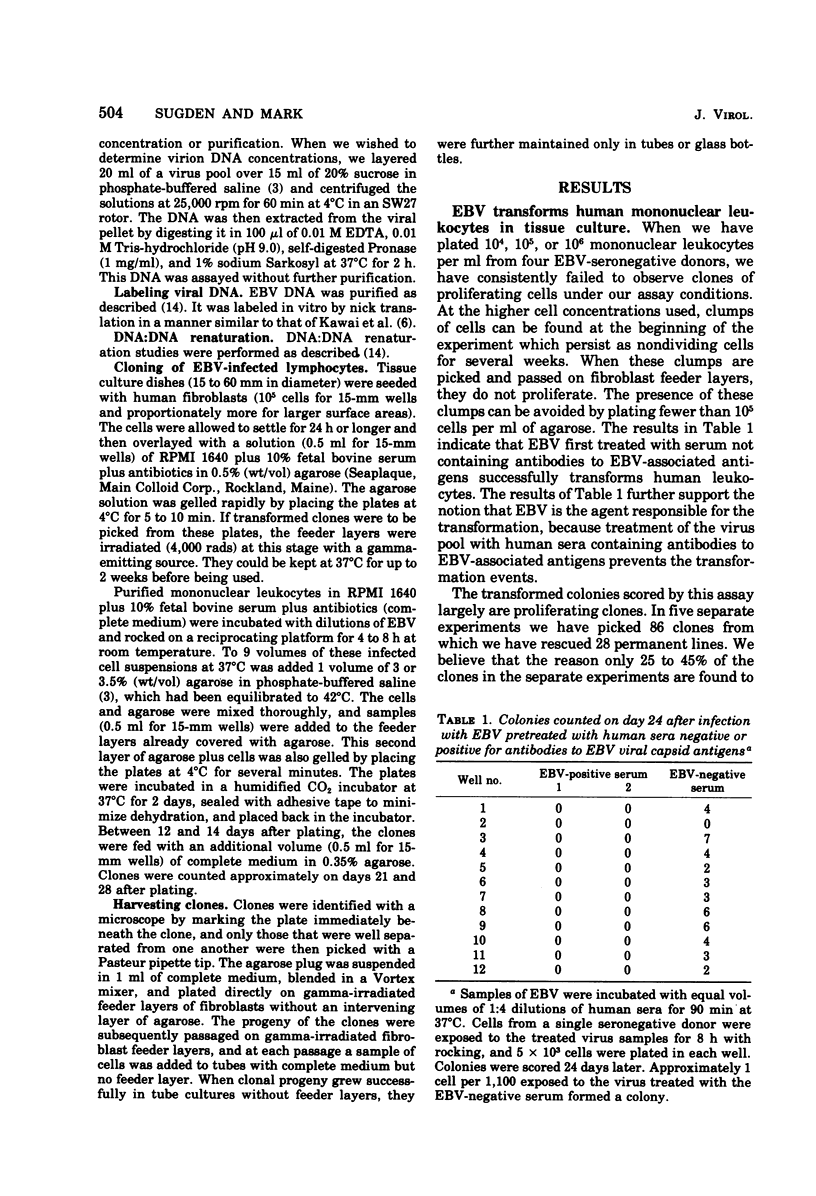
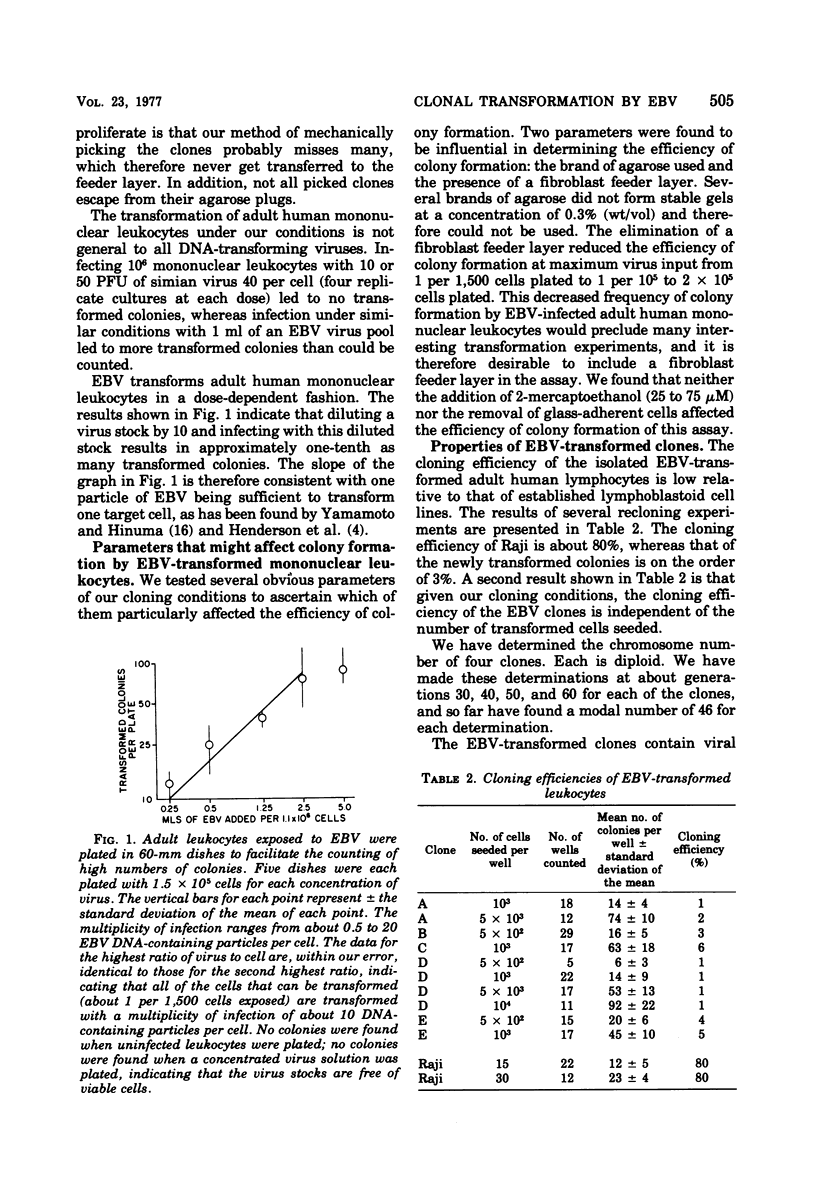
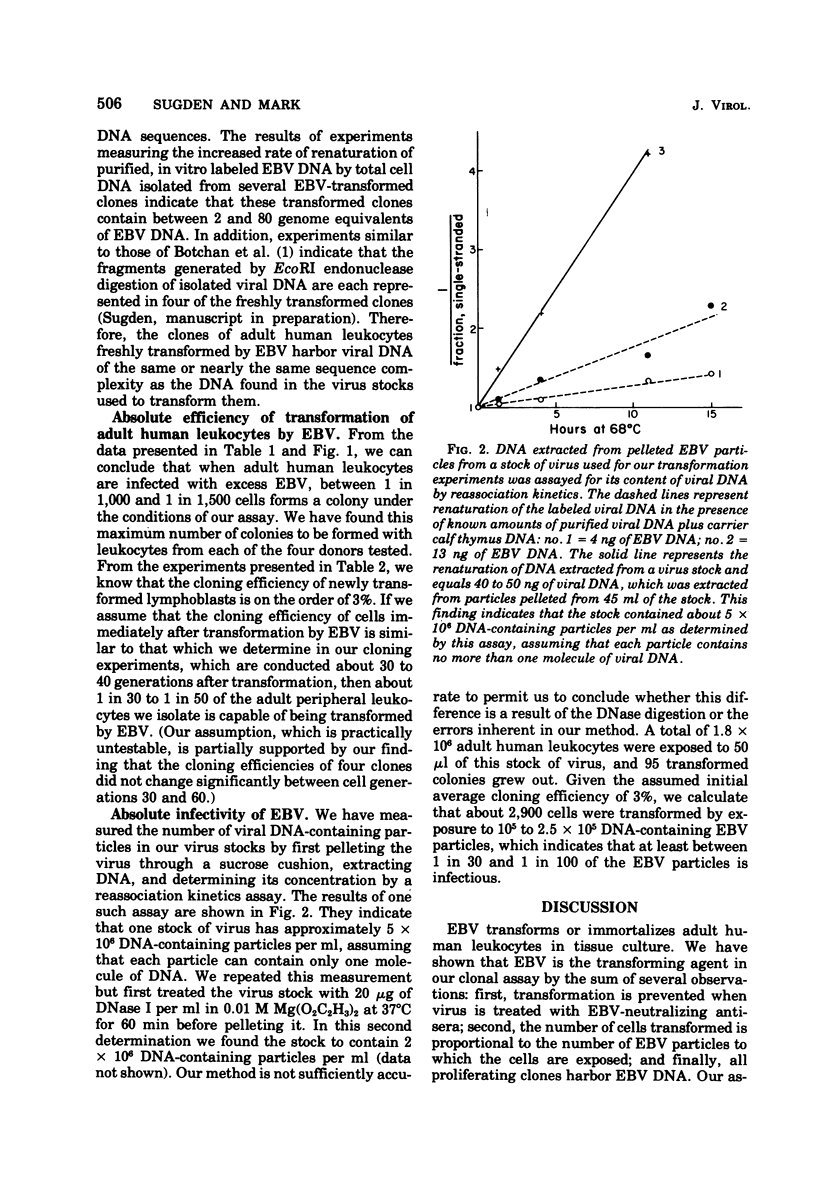
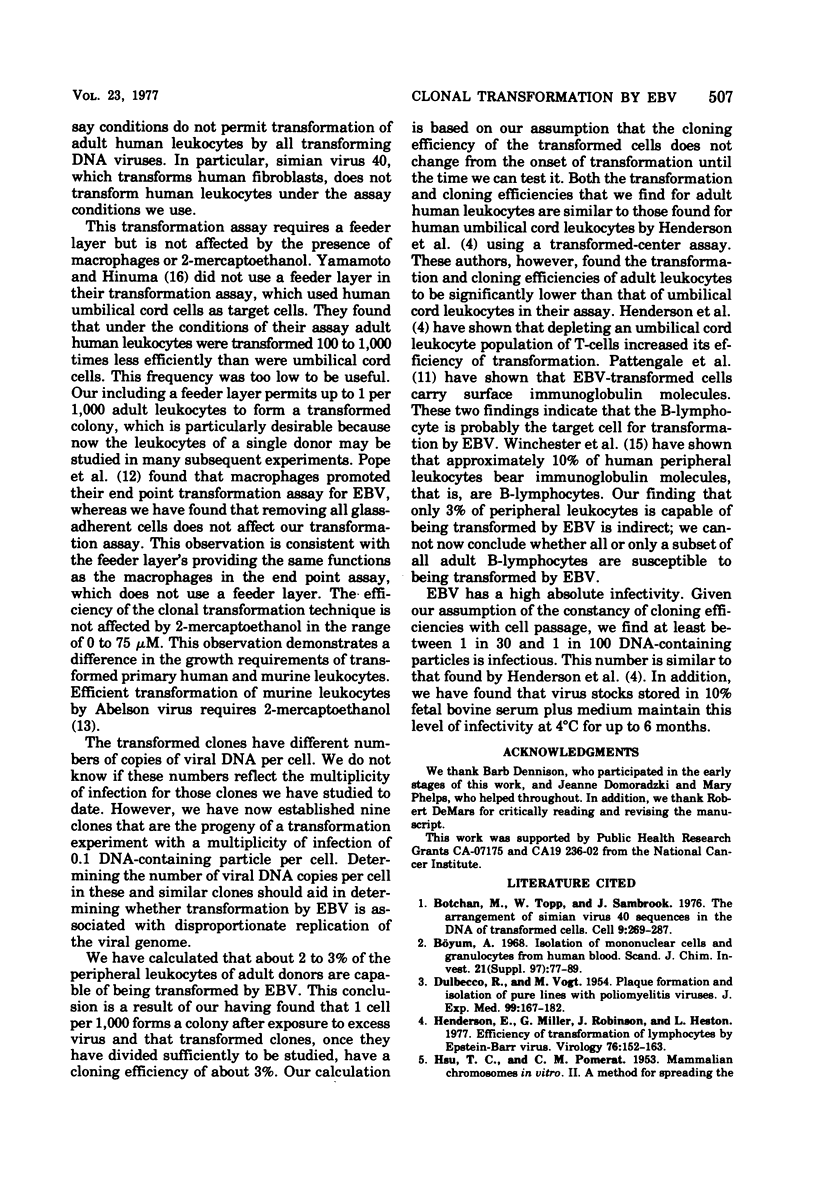
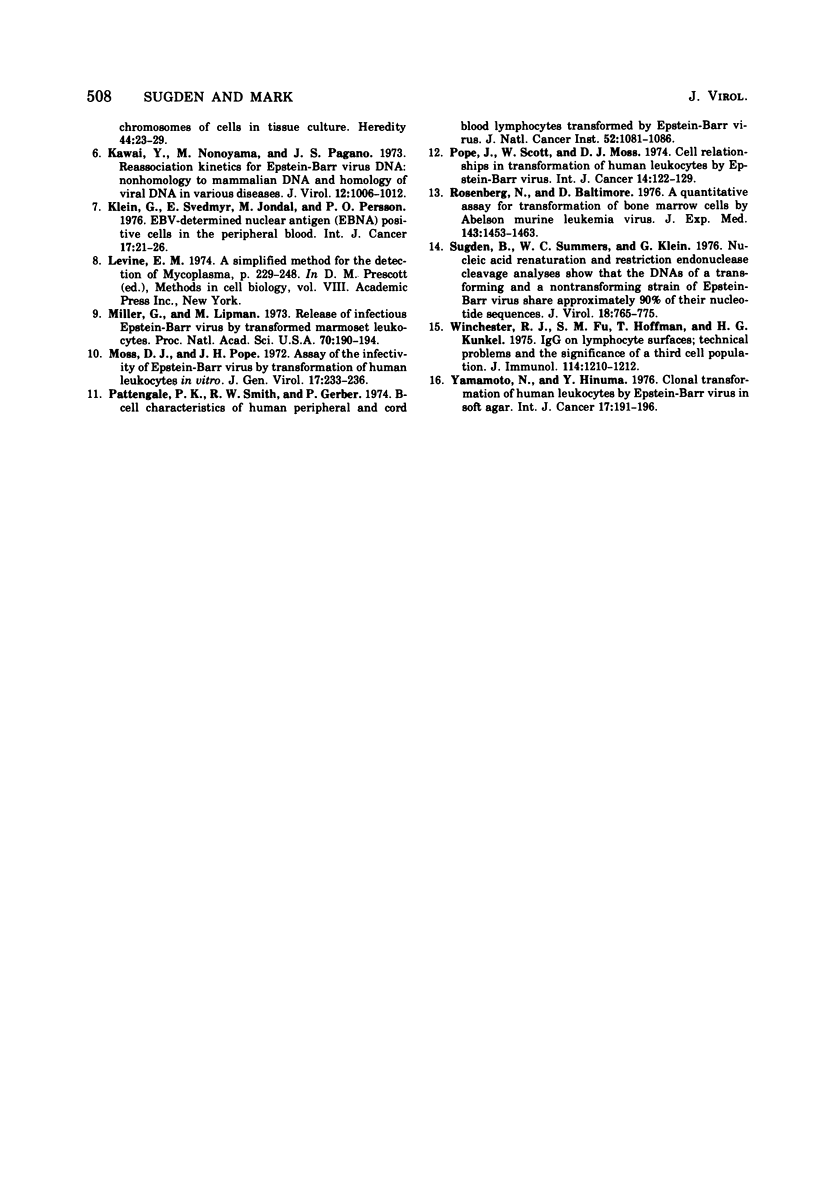
Selected References
These references are in PubMed. This may not be the complete list of references from this article.
- Botchan M., Topp W., Sambrook J. The arrangement of simian virus 40 sequences in the DNA of transformed cells. Cell. 1976 Oct;9(2):269–287. doi: 10.1016/0092-8674(76)90118-5. [DOI] [PubMed] [Google Scholar]
- DULBECCO R., VOGT M. Plaque formation and isolation of pure lines with poliomyelitis viruses. J Exp Med. 1954 Feb;99(2):167–182. doi: 10.1084/jem.99.2.167. [DOI] [PMC free article] [PubMed] [Google Scholar]
- Henderson E., Miller G., Robinson J., Heston L. Efficiency of transformation of lymphocytes by Epstein-Barr virus. Virology. 1977 Jan;76(1):152–163. doi: 10.1016/0042-6822(77)90292-6. [DOI] [PubMed] [Google Scholar]
- Kawai Y., Nonoyama M., Pagano J. S. Reassociation kinetics for Epstein-Barr virus DNA: nonhomology to mammalian DNA and homology of viral DNA in various diseases. J Virol. 1973 Nov;12(5):1006–1012. doi: 10.1128/jvi.12.5.1006-1012.1973. [DOI] [PMC free article] [PubMed] [Google Scholar]
- Klein G., Svedmyr E., Jondal M., Persson P. O. EBV-determined nuclear antigen (EBNA)-positive cells in the peripheral blood of infectious mononucleosis patients. Int J Cancer. 1976 Jan 15;17(1):21–26. doi: 10.1002/ijc.2910170105. [DOI] [PubMed] [Google Scholar]
- Levine E. M. A simplified method for the detection of mycoplasma. Methods Cell Biol. 1974;8(0):229–248. doi: 10.1016/s0091-679x(08)60453-7. [DOI] [PubMed] [Google Scholar]
- Miller G., Lipman M. Release of infectious Epstein-Barr virus by transformed marmoset leukocytes. Proc Natl Acad Sci U S A. 1973 Jan;70(1):190–194. doi: 10.1073/pnas.70.1.190. [DOI] [PMC free article] [PubMed] [Google Scholar]
- Moss D. J., Pope J. H. Assay of the infectivity of Epstein-Barr virus by transformation of human leucocytes in vitro. J Gen Virol. 1972 Nov;17(2):233–236. doi: 10.1099/0022-1317-17-2-233. [DOI] [PubMed] [Google Scholar]
- Pattengale P. K., Smith R. W., Gerber P. B-cell characteristics of human peripheral and cord blood lymphocytes transformed by Epstein-Barr virus. J Natl Cancer Inst. 1974 Apr;52(4):1081–1086. doi: 10.1093/jnci/52.4.1081. [DOI] [PubMed] [Google Scholar]
- Pope J. H., Scott W., Moss D. J. Cell relationships in transformation of human leukocytes by Epstein-Barr virus. Int J Cancer. 1974 Jul 15;14(1):122–129. doi: 10.1002/ijc.2910140115. [DOI] [PubMed] [Google Scholar]
- Rosenberg N., Baltimore D. A quantitative assay for transformation of bone marrow cells by Abelson murine leukemia virus. J Exp Med. 1976 Jun 1;143(6):1453–1463. doi: 10.1084/jem.143.6.1453. [DOI] [PMC free article] [PubMed] [Google Scholar]
- Sugden B., Summers W. C., Klein G. Nucleic acid renaturation and restriction endonuclease cleavage analyses show that the DNAs of a transforming and a nontransforming strain of Epstein-Barr virus share approximately 90% of their nucleotide sequences. J Virol. 1976 May;18(2):765–775. doi: 10.1128/jvi.18.2.765-775.1976. [DOI] [PMC free article] [PubMed] [Google Scholar]
- Winchester R. J., Fu S. M., Hoffman T., Kunkel H. G. IgG on lymphocyte surfaces; technical problems and the significance of a third cell population. J Immunol. 1975 Apr;114(4):1210–1212. [PubMed] [Google Scholar]
- Yamamoto N., Hinuma Y. Clonal transformation of human leukocytes by Epstein-Barr virus in soft agar. Int J Cancer. 1976 Feb 15;17(2):191–196. doi: 10.1002/ijc.2910170207. [DOI] [PubMed] [Google Scholar]


